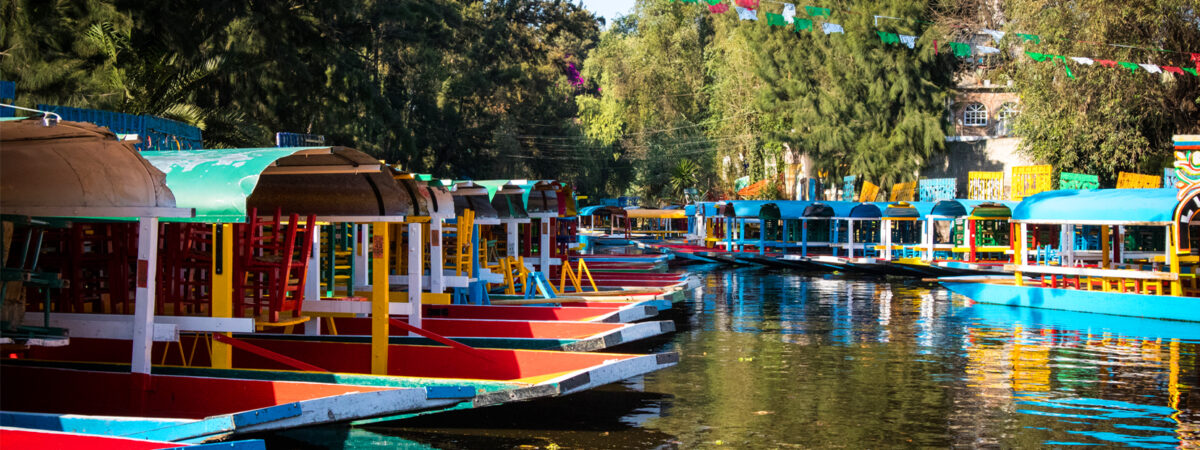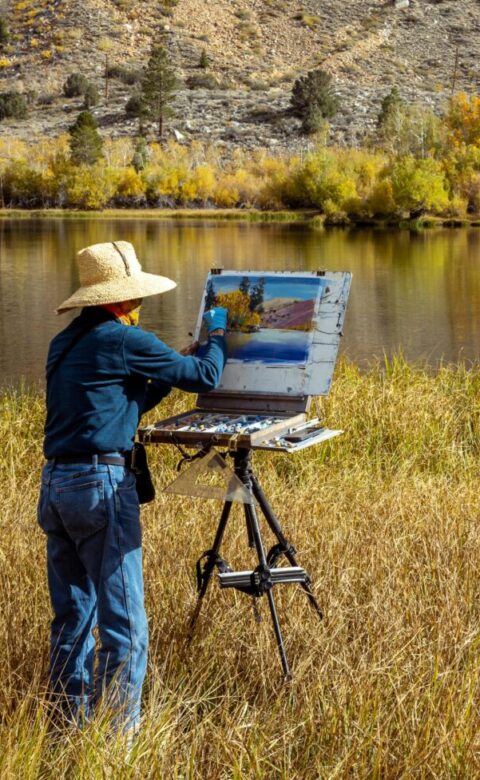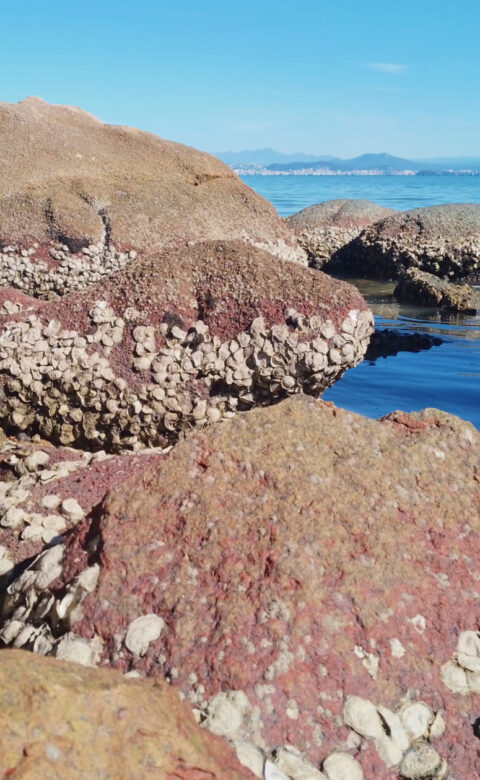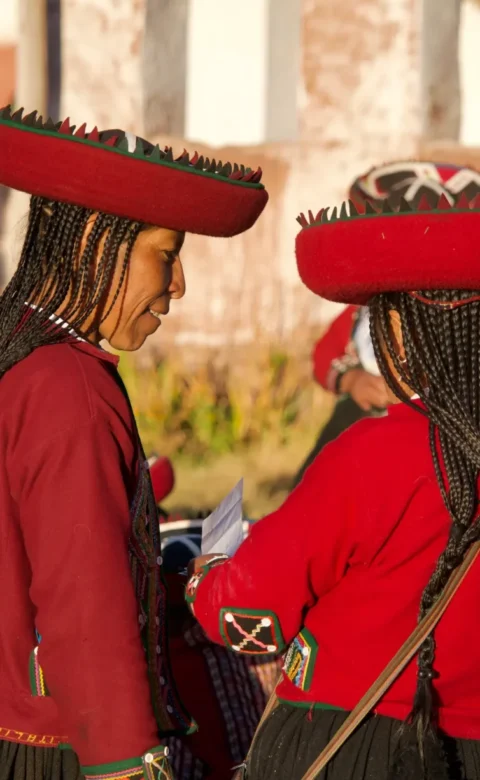On the morning of our native cooking lesson, my friend Gabriel took me to the local market for supplies. Upon arrival, he spotted one of the items on his list, picking up some blackish-blue tortillas. At first glance, they looked burnt… or mouldy. But he assured me they were fresh, their shade coming from the blue corn used to make them; huitlacoche. It was the first of many discoveries that day — in Ciudad de Mexico, the colourful daily Mercado de Xochimilco surprised me with many foods I’d never seen or even heard of before.
28 kilometres south of Mexico City, the market stands in the city’s historic centre, where a marketplace has been since 1550. Nearby are artificial islands, chinampas, built by Aztecs between 700 and 900AD in Lake Xochimilco by making rafts of juniper branches, heaping soil on top and planting crops. Tethered to juniper trees in the shallow waters, the rafts would eventually sink; as they did more were added on top, layer upon layer, to gradually form these islands.
Due to a number of factors including drainage and urban expansion, today the canals are the only remnant of the once-mighty lake. A network of 170 square kilometres of canals runs between 18m-wide islands, a sustainable agricultural system where produce sold in the market is grown by chinamperos. Travelling the manmade waterways, trajineras — brightly-painted wooden boats decorated with native flowers — take locals and visitors on tours of these Floating Gardens of Xochimilco.
As Gabriel guided me through the market, stallholders shouted over the buzz of chatter as we squeezed between shoppers in narrow aisles of vegetables stacked vertically, vivid blocks of colour arrayed like paint swatches. Benches of fish reeked; I recognised only red snapper. Next to a butcher’s stall, where half pig heads hung from an ear, metre-square golden sheets crisscrossed with basketweave patterns were a mystery, glowing under lights. “Chicharrón, deep-fried pig skin,” Gabriel explained.
White tripe layered on a counter was smooth on one side, sea sponge-like on the other. Thankfully he didn’t purchase any! Green leaves perhaps 15cm long were piled next to what appeared to be miniature sunflowers alongside stacks of something verdant and wilted, all intended perhaps for medicinal purposes… or for cooking. I recognised coriander further on. The small, round leaves of the papalo herb smelt peppery.
Chicken heads, comb still attached, eyes missing, lay next to yellow chicken feet on stainless steel tables. Their seeing days were over… I looked away.
We saw plastic cups of coloured jelly cubes in cream; gelatina de mosaico, a popular dessert. I didn’t catch the name of the caramel-coloured honey with cheese in it that we found next door, but it was divine.
Outside on a half metre-wide terracotta plate scorched black in the middle, tlacoyos, triangular-shaped fritters of ground corn, cooked over a makeshift metal frame. The smell of barbequed corn enticed, a yellow cob proving to be sweet and juicy. Corn has been a staple since Aztec times and huge white, yellow and purple ears of it were abundant. White kernels filling buckets to the brim looked like mounds of popcorn.
Cazuelas — wok-sized clay bowls — held green soup; while pre-packed bags of diced and sliced cauliflower, broccoli, and celery were sold for making minestrone Mexicana at home. Under sun umbrellas, blue tarpaulin-covered makeshift tables and wheelbarrows, wheeled over from the nearby canals, held familiar and unfamiliar produce; ladyfinger-sized pink bananas (pink on the inside too); red and green prickly pear fruit, their flavour resembling kiwifruit; guavas the size and colour of pomegranates.
Chatting women in green tabard-style aprons bearing the words ‘Productores de Xochimilco’ sat on stools behind the display, awaiting a sale. Others made a fresh batch of spicy guacamole to replenish large, shallow terracotta dishes.
Dark green prickly pear cactus leaves, spines spiking from them, were stacked like oval plates. Gabriel purchased a bag of these nopales, sliced for salad, and some golden courgette flowers to be sautéed to fill tortillas. Lying on newspaper was huitlacoche, known as Mexican truffle, corn kernels whose blue colouring is caused by black fungus growth. It smelt earthy, actually of dirt… and went straight into Gabriel’s shopping. More appealing to me at that moment was the cupful of deep red pomegranate seeds that I’d just bought. Their tart sweetness popped in my mouth.
Back inside, knee-high plastic bags and garbage cans held chillies. Fresh, dried, purplish-black, orangey-red, scarlet… every colour under the sun and so many varieties.
The waft of cooking food enticed us into a food hall-like area echoing with conversation and clattering cooking utensils. Meat sizzled on barbeque plates, tortillas warmed gently. Diners sat on stools along counters with mouth-watering meals. One option was a tortilla laden with a thick tomato sauce on one end, guacamole in the middle, and refried beans at the other end, strewn with shredded lettuce then sprinkled with grated white cheese.
Below garish piñatas hanging from beams, mostly depicting cartoon characters, aisles intersected. What appeared from a distance to be glazed ceramic vessels in brilliant hues displayed on white tiles was in fact ‘aguas frescas’; fresh juice. Tamarind, horchata, pineapple, guava, watermelon, strawberry… the purple and light blue ones remain an enigma to this day.
Long slender candles hung in black, white and red bunches above a counter laden with limp stalks of flowers and leaves. Maybe something to do with religious rituals? In a cabinet, I spotted Grim Reaper figurines holding sickles. Owls and money at their feet, they were adorned in fake roses with gold-trimmed cloaks covering their head and shoulders. Containers of mixed dried leaves, pine cones, bark, wood chips and flowers labelled ‘Prostata’, ‘Ulceras’ and ‘Gastritis’ were clearly herbal concoctions recommended for specific ailments.
Mounds of beetroot red, chocolate brown, lemon, orange, mustard, and green mole powders and pastes tempted. Mole, simply meaning ‘sauce’, is used in creating sauces and includes at least one type of chilli variety. With anywhere from six to 32 ground ingredients they can include spices, seeds, nuts, raisins and cacao. The complex, chocolatey pastes tasted and smelt as good as they looked, with layers of flavour. A scoop of a dark chocolate-coloured mole destined for a chicken dish was weighed and added to our purchases.
Using my dreadful Spanish, I handed over pesos to buy a white coil of Oaxaca cheese, made from goat’s milk. Fresh and kind of stretchy, it had a feta quality.
Shopping done, outside on Plaza Central de Xochimilco we stopped at a wheeled cart packed with containers of vivid granules. Slices of something pale on sticks, which resembled peeled, raw potato, were waiting to be dunked (jicama; though Gabriel couldn’t quite translate what it was at the time). The stall holder first coated it with chamoy, a sweet and spicy ruby-red condiment, then dipped it into each container, presenting me with my first jicaleta — a vegetable lollipop of sorts with a sugary rainbow along its length. A tangy flavour hit my tongue as I bit into the crunchy unknown; the jicama itself was crisp and sweetish, reminiscent of nashi pear.
This encounter with a novel vegetable topped off my new food experiences at the market. Leaving the plaza with Gabriel’s purchases in hand, though you’d think I might have been overwhelmed by everything we’d seen, smelled and sampled, I couldn’t wait for even more Mexican tastes to come.








